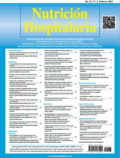Nutrición Hospitalaria, vol. 32(6), pp. 2808-2821. (2015)
Autores: Miguel Ángel García-Gordillo, B del Pozo-Cruz, JC Adsuar, JM Cordero-Ferrera, José Mª AbellánPerpiñán y Fernando I Sánchez Martínez
Summary
The aim os this paper was to assess the psychometric properties of EQ-5D y SF-6D in a Spanish Parkinson’s disease sample. Both instruments seem to be adequate generic Health Related Quality of LIfe measures in terms of validity and sensitivity.
Abstract
Introduction: generic, preference-based HealthRelated Quality of Life instruments are receiving growing attention in health-care decision-making process. In spite of this, to our knowledge, EQ-5D and SF-6D have never been compared in a Parkinson´s disease population sample.
Objective: the aim of this paper was to assess the psychometric properties of both instruments in a Spanish PD population sample.
Methods: a total sample of 133 patients were interviewed using EQ-5D-3L and SF-6D. The validity, level of agreement and sensitivity of both instruments were computed and then compared. The Spanish tariff has been used in both instruments.
Results: utilities of EQ-5D-3L and SF-6D have shown a strong correlation (r >0.50 and p<0.001) with the summary score of the PDQ-8 and the EQ-VAS score. Significant differences were observed in the stages III-IV of the Hoehn & Yahr stage. SF-6D had 51% higher efficiency than EQ-5D at detecting differences in symptoms severity.
Discussion: both EQ-5D-3L and SF-6D seem to be adequate generic Health-Related Quality of Life measures in terms of validity and sensitivity.
Conclusion: EQ-5D-3L presents greater ceiling and floor effects than the SF-6D instrument in this sample. Besides, the instrument SF-6D was better at detecting changes in symptoms severity compared with EQ-5D-3L.

